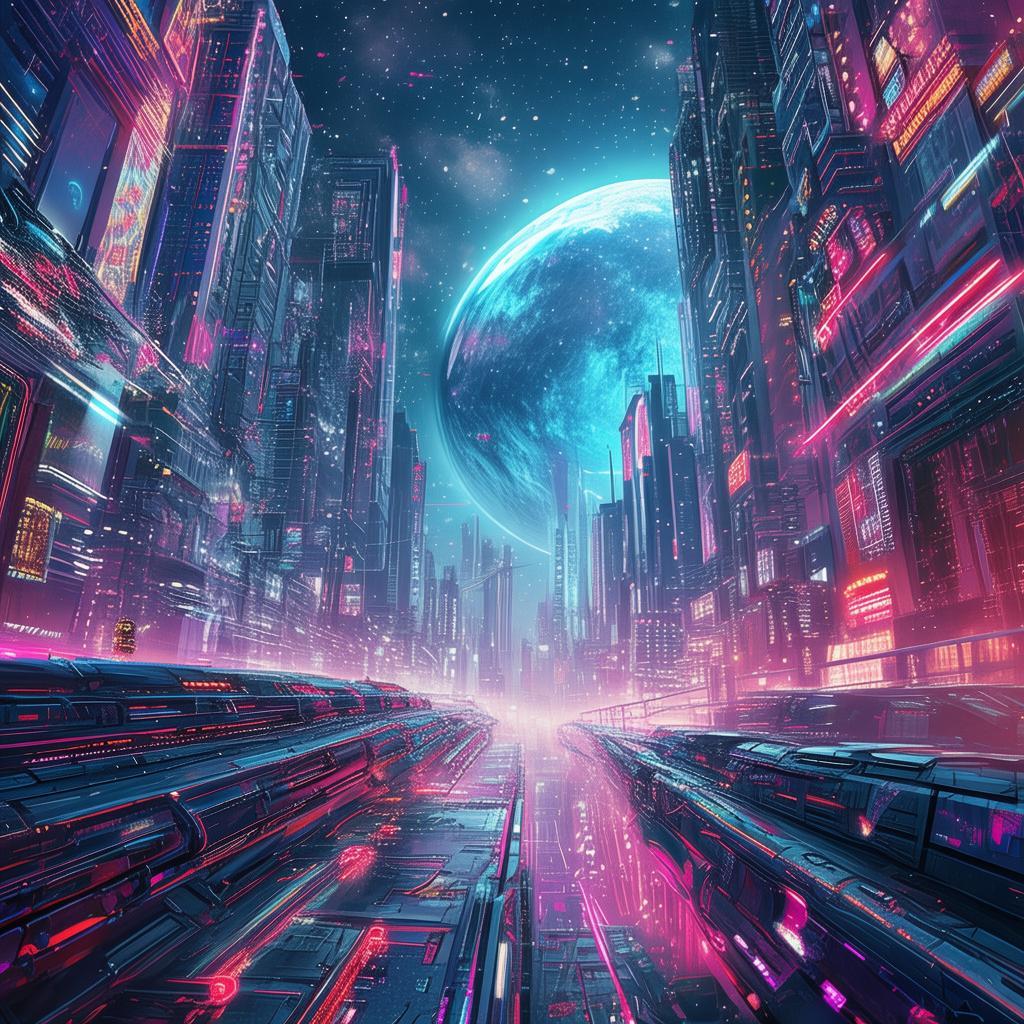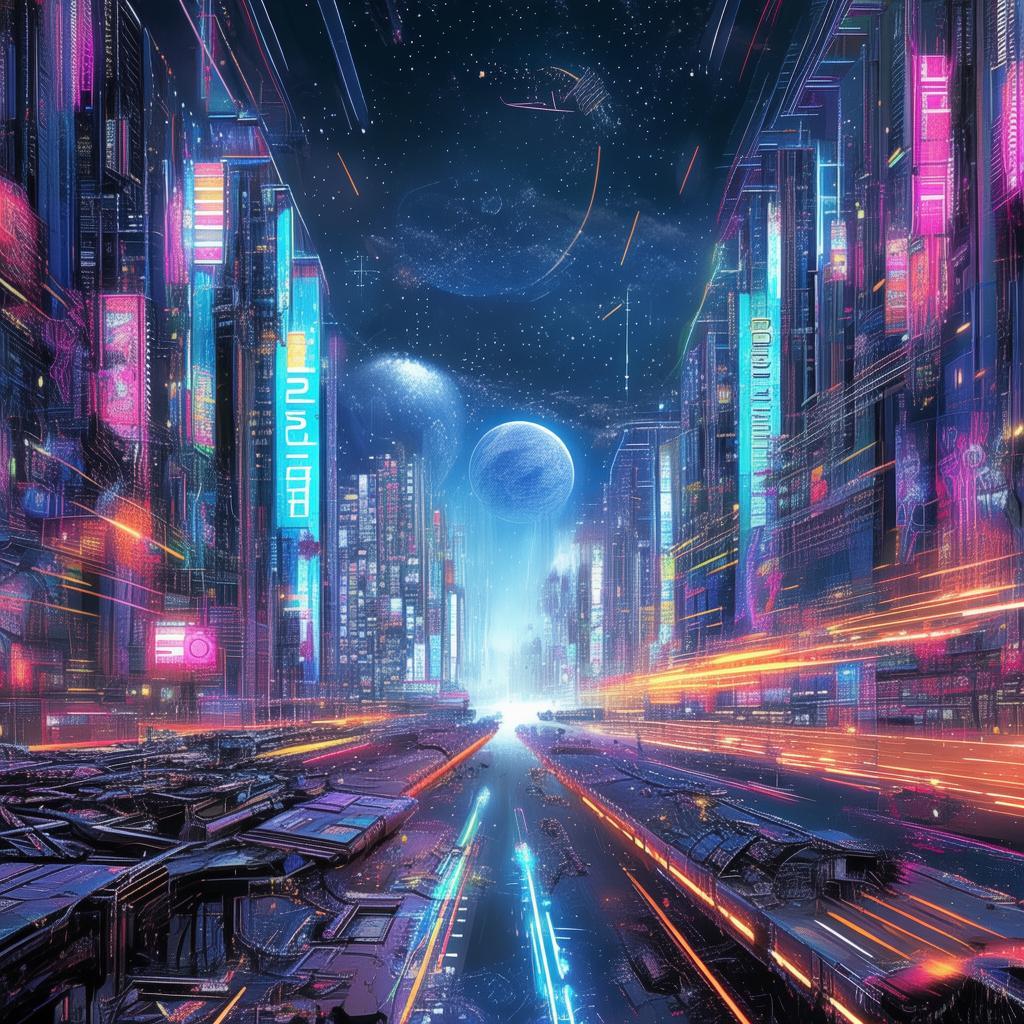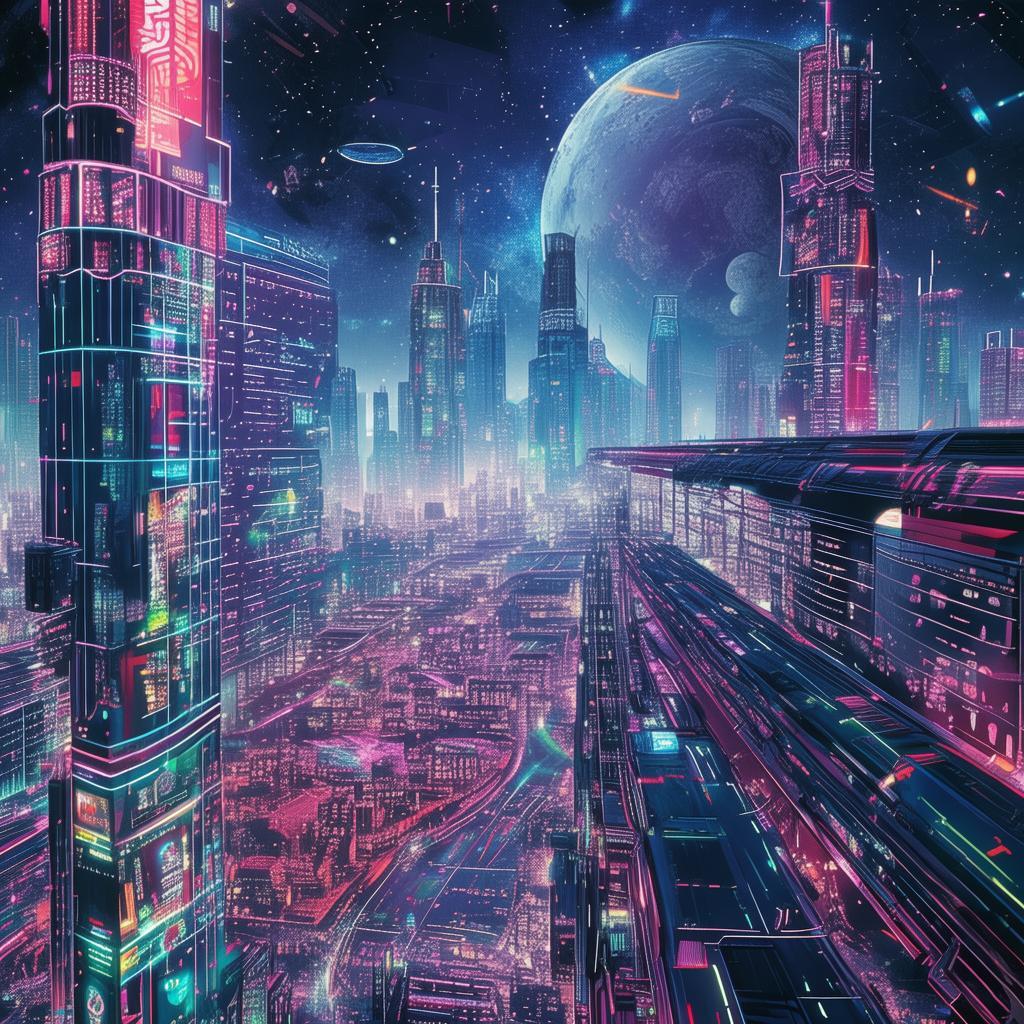The Celestial Symphony: A Musical Rebellion in the Future City
In the year 2147, the city of Luminara stood as a beacon of technological marvel and harmony. Towering skyscrapers pierced the sky, their surfaces shimmering with holographic displays that projected a symphony of colors and light. At the heart of Luminara was the Celestial Symphony, a musical festival that celebrated the union of technology and art, where every citizen participated in a grand communal chorus.
The city was ruled by the Council of Harmonics, a governing body that controlled every aspect of life, from the daily rhythm of the city to the music that filled its streets. They believed that through music, they could maintain a perfect balance, a celestial harmony that would ensure the prosperity and peace of Luminara.

Amara Voss was a young composer and pianist, raised in the shadow of the Council of Harmonics. Her mother, a renowned musician, had been banned from performing after composing a piece that the Council deemed too disruptive. Amara grew up dreaming of her mother's talent and of the day she could create music that would resonate with the soul of Luminara.
One day, while exploring the underground tunnels of Luminara, Amara stumbled upon an ancient manuscript. It was a score, a musical composition that seemed to defy the very laws of harmony that governed the city. Intrigued and determined to uncover its secrets, she began to study the score, her fingers tracing the intricate patterns that danced across the pages.
As Amara practiced the score, she felt a connection to the music that she had never experienced before. It was as if the notes were calling to her, speaking of a world beyond the sanitized perfection of Luminara. She knew that this music held the potential to challenge the Council's authority and inspire a rebellion.
With the help of her childhood friend, Zane, a hacker who had always questioned the Council's iron grip on the city, Amara began to disseminate the score through the underground network of Luminara. They named the movement "The Celestial Symphony," a call to arms for those who felt the city's harmony was a lie.
The Council of Harmonics, sensing the threat, dispatched their most formidable enforcer, Aria, a former member of the Celestial Symphony herself, who had turned against her own kind. Aria's mission was clear: to hunt down Amara and Zane, and to suppress the growing rebellion before it could spread.
As the days passed, the music of The Celestial Symphony began to resonate through the city, awakening a sense of unity and defiance among its citizens. People who had never questioned the Council's rule found their voices in the harmonies of the score, their spirits uplifted by the freedom it offered.
Amara and Zane, now fugitives from the law, found themselves in a race against time to complete their symphony. They knew that the Council would stop at nothing to maintain their control, but they were determined to bring their message to the people.
One evening, as the city prepared for the annual Celestial Symphony festival, Amara and Zane made their final move. They managed to upload the complete score to the city's main network, ensuring that it would play during the festival, even if they were no longer there to hear it.
The festival began, and the crowd was captivated by the music, unaware of its subversive message. As the symphony reached its climax, the crowd erupted into a standing ovation, their emotions channeled into a collective roar of rebellion.
Aria, witnessing the crowd's reaction, realized the extent of the Council's failure. The music had done what no enforcer could: it had exposed the lie of their so-called harmony and united the city against them.
In the aftermath, the Council of Harmonics was overthrown, and the citizens of Luminara, now free to express themselves through music and technology, began to rebuild their city. Amara and Zane became heroes, their names etched into the history of Luminara as the composers of the symphony that had sparked a revolution.
The Celestial Symphony was no longer just a musical piece; it was a symbol of the power of art to challenge authority and inspire change. And in Luminara, the music continued to play, a testament to the enduring spirit of rebellion and the endless possibilities of harmony.
✨ Original Statement ✨
All articles published on this website (including but not limited to text, images, videos, and other content) are original or authorized for reposting and are protected by relevant laws. Without the explicit written permission of this website, no individual or organization may copy, modify, repost, or use the content for commercial purposes.
If you need to quote or cooperate, please contact this site for authorization. We reserve the right to pursue legal responsibility for any unauthorized use.
Hereby declared.









